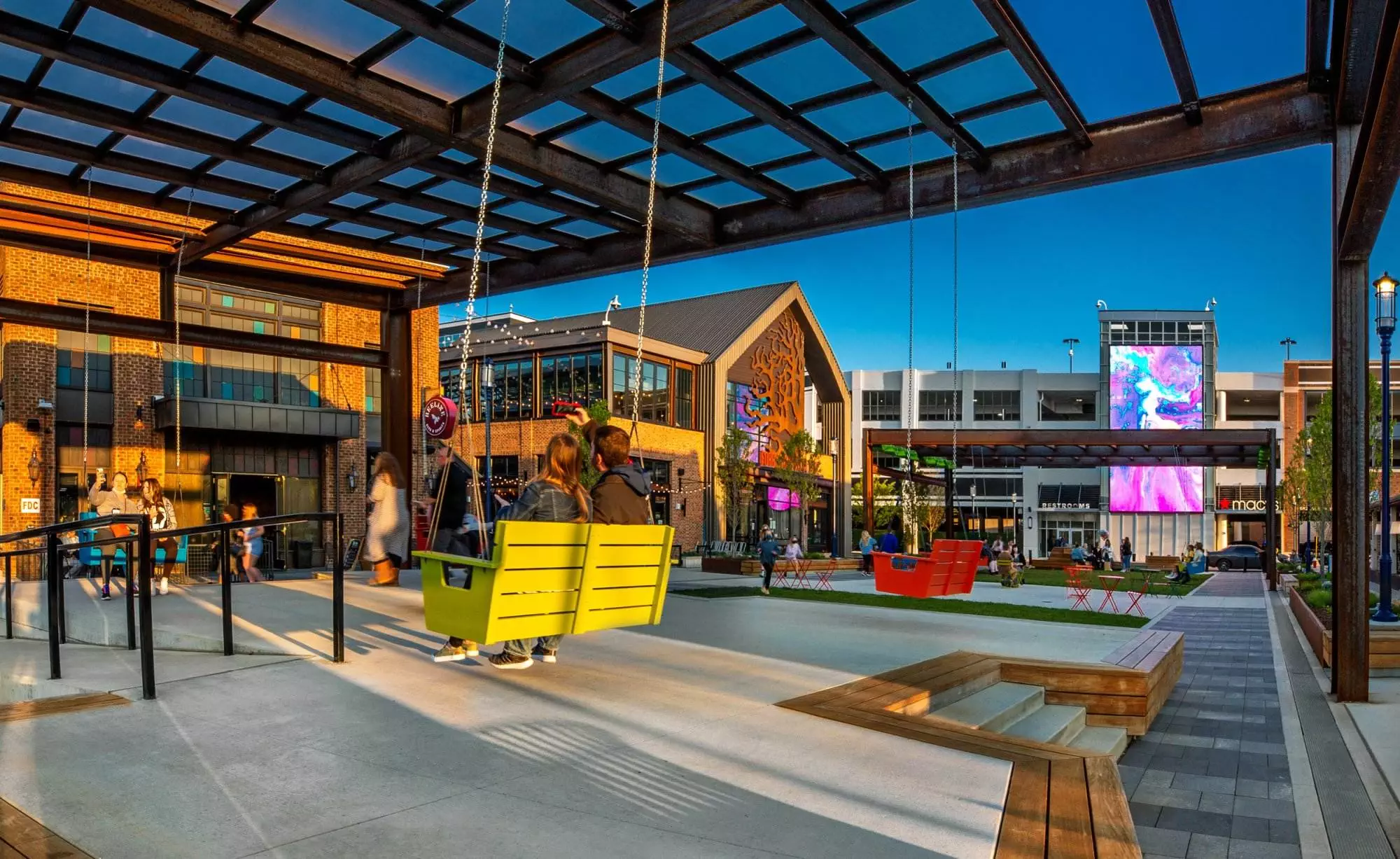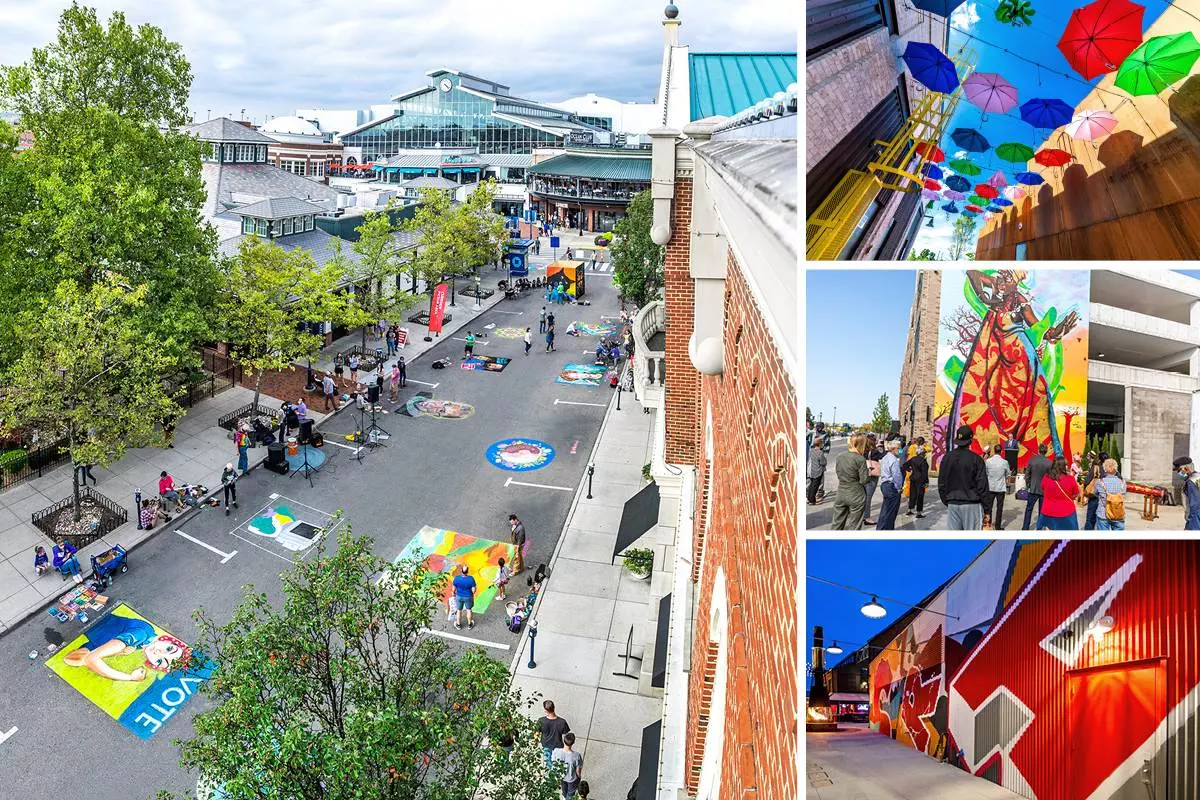Rethinking Retail: To Repurpose, or Reconstruct?

Pandemic Repositioning the “Experience” at the Center of It All
Brick-and-mortar retail was already suffering an identity crisis, long before lockdowns and social distancing became “the new normal.” Big boxes were going extinct, online retailers were devouring market share, and inline storefronts were increasingly adorned with vacancy signs. Strategies for hedging against the “retail apocalypse” (probably more of an evolution) and for rethinking retail centers have become increasingly important in the past several years.
Then a global health crisis came along and accelerated the pace of change all the more.
Some wondered whether the physical retail environment would ever recover. Yet, here we are. And an interesting phenomenon is beginning to emerge.
What an Experience
There are still many who harbor the notion that brick-and-mortar retail—malls, mixed-use centers, and other commercial districts—is withering on the vine. But some rather interesting discoveries have been made, as the world begins to emerge from the global COVID-19 crisis…perhaps some of it, counterintuitive.
People are starting to demonstrate a real yearning for the communal experiences we have been prohibited from enjoying for more than a year now. It turns out, to no great surprise, that people like to congregate. Humans need to experience human interaction. What we once perhaps scorned as “fighting the crowds” is now being lamented as “missing the experience of it all.”
The counter-theory to the prevailing wisdom goes like this: We’ve missed being among people, sharing experiences, seeing and being seen, and there is no substitute for a true, three-dimensional, multi-sensory experience. While online shopping may always provide greater convenience (for certain categories of retail), it generally cannot entertain, captivate, amuse, or energize in the way that an experience can.
In that way, this theory argues, retail centers are poised for a comeback. But rethinking the retail environment of tomorrow will not be your father’s shopping mall.
So now what?
In order to invite visitors into a venue, convince them to dwell and shop, and ultimately spend money, there will need to be a compelling draw—one with which online retailers and front-porch delivery services cannot compete. In a word? Experiences.
We have been tasked by several of our clients to explore ways of both retaining intrinsic worth and maximizing the potential value of existing venues through the vital creation and enhancement of the consumer experience. Whether it’s called “rethinking retail” (or “re-setting,” “repositioning” or “re-imagining” or whatever buzzword you might insert), we believe “The Experience” will be the essential differentiator and metric for the viable and successful projects in the industry for the foreseeable future. From a sweeping re-do of the site, to a densification/diversification of uses, to the less dramatic, but equally effective, gestures of simple activation/connection, we believe that somewhere within this spectrum is the framework of an Experiential Solution.
Strategic Analysis at Work: Three Challenges, Three Solutions for Rethinking Retail
Think of the typical retail district, shopping center or mall in your own neighborhood, and you can imagine what the challenges look like globally. Big box anchors are vacant, movie theaters are struggling, foot traffic is light or non-existent, and retailers are either closing or struggling to stay open. These centers may range from distressed to marginally profitable—shells of their former selves back in the heyday.
While struggling today, many of these properties do, in fact, have promising futures…especially given that second prevailing school of thought/optimism about the human spirit and its need to be among others and enjoy experiences. So the first question is, What are the center’s challenges, and what are its opportunities?
Most strategies for rethinking retail environments fall into one of three categories:
- Retail is still the primary driver of value at the property, but other factors may be hampering its success. These factors may include things like merchandizing or tenant mix, evolution of tenancy, the overall planning approach, etc.
- Some retail is viable, but no longer the highest and best use at the property. In these situations, there may be a latent but real demand for a diversification of uses. For example, while the past property was solely or primarily retail, the future space may include residential, office, recreation space, education tenancy, medical use, etc.
- Retail is no longer viable for the property, caused by changing demographics, lifestyle demands, economic realities or changes in property values. In such cases, owners and managers need to be realistic about what the future holds for these types of properties.
Identifying where a property falls among these three categories will help operators map their futures to the best and most promising course of action going forward. Whatever the strategic remediation plan turns out to be, you can almost be assured that the new metaphorical anchor of the reimagined center will be The Experience. Not a place to shop, but an activity to be enjoyed, cherished and remembered.
A developer may be able to achieve this modestly, or in some cases, might need to completely tear down and start over—with, of course, a range of moderations in between. To use layman’s terms, let’s call these three solution sets as “Lite,” “Medium” and “The Big Fix.”
“The Lite Fix”
In this scenario, the property may explore “cosmetic” modifications through architectural and graphic enhancements, updating signage and visuals throughout the center, for example. One may also consider ways to diversify the merchandising and tenant mix. And this approach would mark an appropriate opportunity to review the program of operations and management. Experiential tenants may fill retail vacancies, and perhaps open spaces would be activated with entertainment-style programming.
“The Medium Fix”
A middle-ground approach might require a more significant redesign of part or all of the retail master plan. In a case in which some retail is viable but no longer the primary use, such centers may need to add more dense and more diverse uses, based on local market demand. One may need to evaluate whether to replace and reposition underperforming retail components and anchors with a broader mix of uses, including entertainment, recreation or other experiential uses.
“The Big Fix”
Consider the scenario above in which retail is no longer a viable use for the property: a major overhaul may be what’s required. Though a much larger undertaking, this allows the owner/operator to completely reimagine and reposition the property for the brighter tomorrow that is almost certain to follow. This affords the optimist a blank canvas with which to get creative and innovative. This would involve completely removing the retail/mall use. One may be able to retain the physical structures, as deemed practical; or in other instances, a complete demolition and redevelopment is called for. In either case, the new repurposed uses demand the evaluation of opportunities to activate and connect the center more organically and more inextricably to the surrounding community. Done well, this new urban district would weave into the fabric of the community…seamlessly and naturally, either becoming an extension of, or the central square to, the broader locality.
(Re)Mix and Match
Whether retail remains viable at the property, in part or in whole, creative solutions must be explored, evaluated, envisioned and ultimately applied. There is no one “fix” for what may ail certain retail environments, as every center, every community, and every situation is different.
But whereas one might have once considered a property to be a collection of tenants and merchandise, we must now begin imagining and rethinking our retail districts as centers of human activity and interaction. We are imagining communal gathering places where visitors can do much more than just shop: They can partake in recreation, entertainment, relaxation, congregation, and participation. This…this is the center of the future.
We’ve learned plenty in the past 12 months about what conveniences can be achieved in the digital age, but we’ve also learned a great deal about what humans crave beyond merely filling their needs and desires for commercial goods and services transactionally. That which we’ve missed, and that which actual people have demonstrated a genuine yearning for, is what retail owners and operators are well positioned to deliver, with a range of strategic approaches at their disposal.
We believe the prescription is some blend of the following remedies:
- Reposition/Replace: creating new opportunities for underperforming centers in order to enhance the overall experience, evolving single-use centers into multi-use environments and multi-dimensional communities.
- Densify/Diversify: exploring revitalization of the street-level and overall visual experience and creating an authentic “stage set” for new and dynamic uses by maximizing the horizontal and vertical opportunities to create authentic, pedestrian-friendly communities.
- Activate/Connect: energizing the center through the programming of operations and management, resulting in an enhanced and expanded “public realm,” through engagement with the existing local community and the curation of local arts, entertainment and activities.
All of these approaches are interconnected, interchangeable and interdependent. And they all leverage the human experience as the central component—the main event, if you will—the compelling reason for members of the community to step out from behind the computers and into the public square…a commercial hub of activity that today’s retail centers most certainly must become.
We will explore each of these challenges and opportunities to rethinking retail or repositioning a retail center for the post-pandemic community of the future in much greater detail in subsequent installments, referencing real-world success stories and case studies. If you have any questions or comments in the meantime, please feel free to contact me at 3info@d3i-usa.com. I’d be interested to hear what your personal school of thought is regarding the future of the retail experience.
for a digital copy of the post: 2021-04_D3i blog_rethinking retail.pdf






